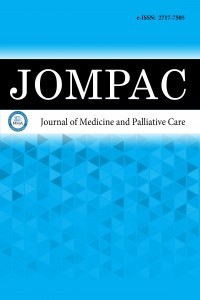1.
Türk Toraks Derneği. Erişkinlerde toplumda gelişen pnömonilertanı ve tedavi uzlaşı raporu. Buluş;2021.
2.
Almiral J, Bolibar I,Vidal J, et al. Epidemiology of communityacquired pneumonia in adults: apopulation -based study. EurRespir J. 2000;15(4):757-763.
3.
Theilacker C, Sprenger R, Leverkus F, et al. Population-basedincidence and mortality of community-acquired pneumonia inGermany. PLoS One. 2021;16(6):e0253118.
4.
T.C. Sağlık Bakanlığı, Refik Saydam Hıfzıssıhha MerkeziBaşkanlığı Hıfzıssıhha Mektebi Müdürlüğü, Başkent ÜniversitesiUlusal Hastalık Yükü ve Maliyeti Etkinlik Projesi, 2004 (www.toraks.org.tr).
5.
Wunderink RG. Community-acquired pneumonia. In:Cohen J, Powderly, Opal SM, eds. Infectious Diseases. 4th ed.Elsevier;2017:251-257.
6.
Ramirez JA, Wiemken TL, Peyrani P, et al. Adults hospitalizedwith pneumonia in the United States: incidence, epidemiology,and mortality. Clin Infect Dis. 2017;65(11):1806-1812.
7.
Özlü T, Bülbül Y, Özsu S. Ulusal verilerle toplumda gelişenpnömoniler. Tüberküloz Toraks Derg. 2007;55(2):191-212.
8.
Özlü T. Toplum kökenli tipik pnömoniler. Sendrom. 1996;8(6):41-46.
9.
Campbell GD. Overview of community-acquired pneumo-nia: prognosis and clinical features. Med Clin North Am.1994;78(5):1035-1048.
10.
Berg AS, Inchley CS, Fjaerli HO, et al. Clinical features andinflammatory markers in pediatric pneumonia: a prospectivestudy. Eur J Pediatr. 2017;176:629-638.
11.
Florin TA, Ambroggio L. Biomarkers for community-acquiredpneumonia in the emergency department. Curr Infect Dis Rep.2014;16:451. doi.org/10.1007/s11908-014-0451-8
12.
Sintes H, Sibila O, Waterer GW, Chalmers JD. Severity assesmenttools in CAP. Eur Respir Monogr. 2014;63:88-104.
13.
Ewig S, Bauer T, Richter K, et al. Prediction of in-hospital deathfrom community-acquired pneumonia by varying CRB-agegroups. Eur Respir J. 2013;41(4):917-922.
14.
Hohenthal U, Hurme S, Helenius H, et al. Utility of C-reactiveprotein in assessing the disease severity and complicationsof community-acquired pneumonia. Clin Microbiol Infect.2009;15(11):1026-1032.
15.
Van Vugt SF, Broekhuizen BDL, Lammens C. Use of serum C reactiveprotein and procalcitonin concentrations in addition to symptomsand signs to predict pneumonia in patients presenting to primarycare with acute cough: diagnostic study. BMJ. 2013;346:f2450.
16.
Abers MS, Musher DM. Clinical prediction rules in community-acquired pneumonia: lies, damn lies and statistics. QJM Int J Med.2014;107(7):595-596.
17.
Lowsby R, Gomes C, Jarman I, et al. Neutrophil to lymphocytecount ratio as an early indicator of blood stream infection in theemergency department. Emerg Med J. 2015;32(7):531-534.
18.
de Jager CP, Wever PC, Gemen EF, et al. The neutrophil-lymphocyte count ratio in patients with community-acquiredpneumonia. PLoS One. 2012;7(10):e46561.
19.
Üçsular F, Polat G, Karadeniz G, et al. Predictive value of platelet-to-lymphocyte ratio and neutrophil-to-lymphocyte ratio inpatients with hypersensitivity pneumonia. Sarcoidosis Vasc DiffusLung Dis. 2020;37(4):e2020012.
20.
Şahin F, Feyza Aslan A, Koç Karaçar C. Which is the mosteffective inflammatory marker in the diagnosis, severity andtreatment follow-up of patients with pneumonia? Eur Resp J.2019;54(Suppl 63):PA4541.
21.
Omran A, Awad H, Ibrahim M, et al. lung ultrasound andneutrophil lymphocyte ratio in early diagnosis and differentiationbetween viral and bacterial pneumonia in young children.Children. 2022;9(10):1457.
22.
Cheng W, Chen L, Yu H, et al. Value of combining of the NLR andthe fibrinogen level for predicting stroke-associated pneumonia.Neuropsychiatric Disease and Treatment. 2021;17:1697-1705.
23.
Ng WWS, Lam SM, Yan WW, Shum HP. NLR, MLR, PLRand RDW to predict outcome and differentiate between viraland bacterial pneumonia in the ıntensive care unit. Sci Rep.2022;12(1):15974.
24.
Zahorec R. Neutrophil-to-lymphocyte ratio, past, present andfuture perspectives. Bratisl Lek Listy. 2021;122(7):474-488.
25.
Damar Çakırca T, Torun A, Çakırca G, Portakal RD. Role of NLR,PLR, ELR andCLR in differentiating COVID-19 patients withand without pneumonia. Int J Clin Pract. 2021;75(11):e14781.
26.
Koval D, Bielosludtseva K. Neutrophil-to-lymphocyte ratio(NLR) as a marker of COVID-19-associated pneumoniaprogression. Eur Resp J. 2022;60(Suppl 66):3533.
27.
Curbelo J, Rajas O, Arnalich B, et al. Neutrophil count percentageand neutrophil-lymphocyte ratio as prognostic markers inpatients hospitalized for community-acquired pneumonia. ArchBronconeumol. 2019;55(9):472-477.
28.
Ge YL, Zhang HF, Zhang Q, et al. Neutrophil-to-lymphocyte ratioin adult community-acquired pneumonia patients correlates withunfavorable clinical outcomes. Clin Lab. 2019;65(5):839-844.
29.
Lee H, Kim I, Kang BH, Um SJ. Prognostic value ofserial neutrophil-to-lymphocyte ratio measurements inhospitalized community-acquired pneumonia. PLoS ONE.2021;16(4):e0250067.
30.
Lee JH, Song S, Yoon SY, et al. Neutrophil to lymphocyte ratio andplatelet to lymphocyte ratio as diagnostic markers for pneumoniaseverity. Br J Biomed Sci. 2016;73(3):140-142.
31.
Kuikel S, Pathak N, Poudel S, et al. Neutrophil-lymphocyte ratioas a predictor of adverse outcome in patients with community-acquired pneumonia: a systematic review. Health Sci Rep. 2022;5(3):e630.
32.
Meng Y, Zhang L, Huang M, Sun G. Blood heparin-bindingprotein and neutrophil-to-lymphocyte ratio as indicators of theseverity and prognosis of community-acquired pneumonia. RespMed. 2023;208:107144. doi.org/10.1016/j.rmed.2023.107144

